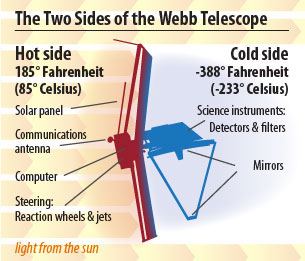I was looking over the JWST schedule, and there’s some interesting observations already done and more coming up:
On July 10, Webb apparently used the NIRspec instrument to look at the Wasp 39 system. Wasp-39b is another hot Jupiter, this one about 700 light years away, as opposed to the 1100 ly or so of Wasp 96 already imaged. Water has already been discovered in the atmosphere, but apparently there are some anomalies that Webb will help to resolve.
On July 11 Webb supposedly imaged the Trappist-1 system. This is really exciting, as the system is full of planets, including at least one in the ‘habitable’ zone. Again, NIRspec was used to collect spectra.
On July 12, the Wasp-52 system was imaged with the slitless spectrometer NIRISS instrument. This system is interesting because another ‘hot Jupiter’ was dound there, but this one has tentatively given up a spectrum including sodium and potassium, which you wouldn’t expect in a hot Jupiter, Speculation is that it may have one or more volcanically active moons, and that’s where the sodium and potassium come from. Webb should resolve that. If it does detect an exomoon, it will be the first confirmed exomoon discovery, I think. There are several other candidates for exomoons, but none confirmed.
Also on the 12th, NIRCam was supposed to have imaged Neptune.
Also on the 12th, HAT-P-1 slitless spectroscopy. Another hot jupiter, this one even closer (571 ly), and unusual because it’s larger and less dense than it should be.
On the 13th, the WR137 star was imaged. WR137 is a ‘Wolf-Rayet’ star with unusual emission lines. It’s about 6,000 LY away. It’s also a binary. This one will be really interesting.
On the 14th, Web imaged asteroid 1998-bc1 and also took its spectra. This is an asteroid in the belt between Mars and Jupiter, around 15km in diameter.
Also on the 14th a bunch of Jupiter imagery was done with NIRCam.
Today, the 15th, Exoplanet system HD149026 was imaged. This is a fairly close (250ly) large yellow star. This one has an unusual exoplanet that orbits really close to the star (period of 2.5 days), has about 1/3 the mass of Jupiter but is much denser than a gas giant. It may be a huge, rocky world. It’s so hot it likely glows red.
Also more imagery and spectra of WR137, and throughout the last week lots of imagery on the Lesser Magellanic Cloud, which looks to be calibration stuff.
And that’s just some of the stuff imaged in the last week. The amount of data we are going to get from Webb will be incredible. In the next couole of days they are going to be look8ng at SN1987-A, a Supernova, lots of high redshift galaxies, and more imagery/spectra of Trappist-1.
This is the new golden age of astronomy. Between Webb, Gaia, TESS and Kepler, and the upcoming Nancy Roman Grace telescope, our knowledge of the universe is growing exponentially. And the best part is that all the data is open spurce and anyone can use it to do science and discovery.







